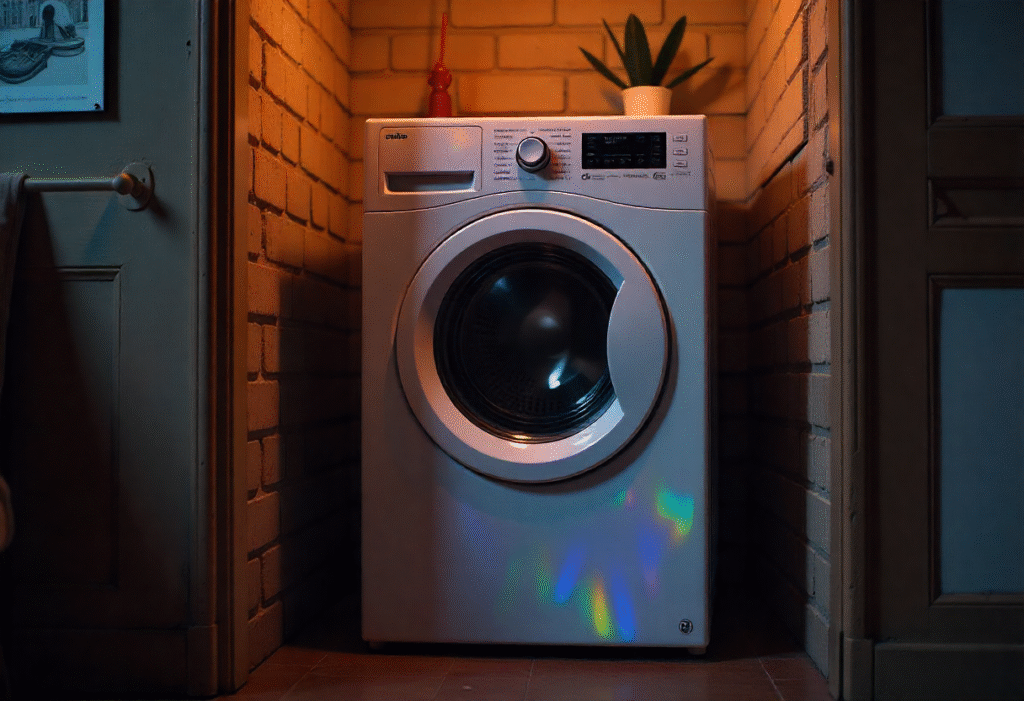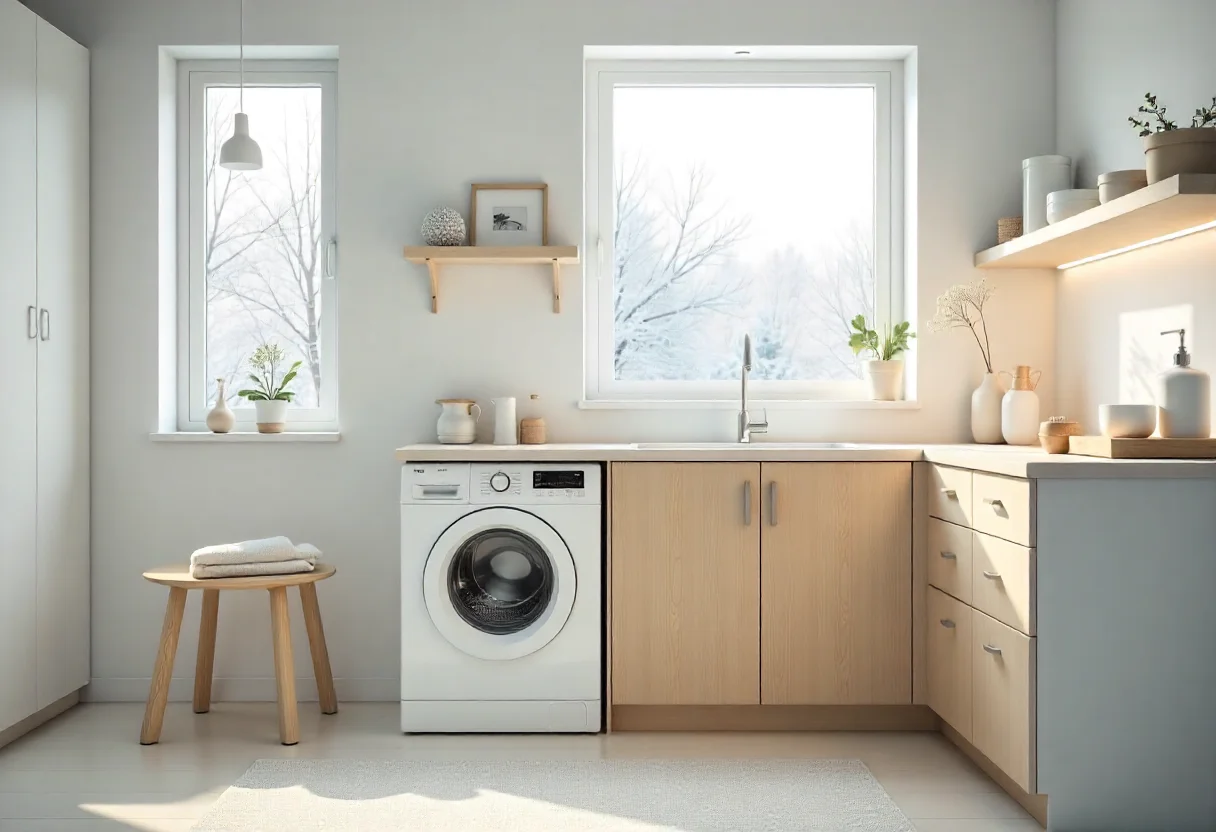How Does a Ventless Clothes Dryer Work? Exploring Pros, Cons, and Key Differences
Choosing the right clothes dryer can be tricky, especially when space and installation options are limited. How does a ventless clothes dryer work? Ventless clothes dryers offer a great solution, drying clothes without the need for an external vent. In this article, we’ll explain the mechanics of how it works, their pros and cons, and how they compare to traditional vented models. If you’re considering a ventless dryer for your home, read on to learn more about its features and whether it’s the right choice for you.
Key Takeaways
- Ventless dryers operate without external vents, condensing moisture into water for drainage or recycling.
- They offer space-saving benefits, ideal for apartments and homes with no venting option.
- However, they tend to have longer drying times and require regular maintenance.
- The main difference between vented and ventless dryers lies in their operation, drying speed, and installation requirements.
What is a Ventless Clothes Dryer?
A ventless clothes dryer is a type of dryer that doesn’t require an external vent to expel warm, moist air. Unlike traditional dryers that vent moisture outside, ventless dryers either condense moisture into water or recycle it into the drying process. There are two primary types: condensation dryers and heat pump dryers.
- Condensation dryers: These use a heat exchanger to cool the hot, moist air, causing condensation. The water is then either pumped out or stored in a collection tank.
- Heat pump dryers: These are more energy-efficient as they recycle heat and moisture, using a refrigerant to remove moisture from the air, which is then condensed and drained.
Unlike traditional vented dryers, which push hot, moist air outside, ventless dryers retain the moisture and heat, making them more suited for apartments and homes without a venting system.
How Does a Ventless Clothes Dryer Work?
Ventless dryers work by recirculating moisture rather than venting it outside. Here’s how it works in more detail:
- Heat Generation: The dryer generates heat to dry the clothes. In the case of heat pump dryers, heat is recycled within the system to minimize energy use.
- Moisture Removal: As clothes dry, moisture is released into the air inside the drum. In condensation dryers, this moisture is condensed by a heat exchanger, cooling the moist air. The condensed moisture is either drained away via a hose or collected in a tank for later disposal.
- Air Circulation: In heat pump dryers, the air is recirculated through the machine, passing through the heat exchanger multiple times. This process is more energy-efficient, as it reuses the heat instead of expelling it.
- Efficient Moisture Management: Moisture buildup in the dryer drum is removed continuously, ensuring that the drying process remains efficient without the need for an external vent.
Ventless dryers are ideal for those who want to avoid the complexity of installing a vent while still having the ability to dry clothes efficiently.
Ventless Dryer Pros and Cons
Ventless dryers come with various advantages and disadvantages. When considering the ventless dryer pros and cons, it’s important to weigh the unique benefits alongside their limitations to determine if they’re the right fit for your home and drying needs.
Pros of Ventless Dryers
- No Vent Installation Needed: Ventless dryers are great for apartments or homes without external vents. They only require a power outlet and water drainage, offering flexibility in installation.
- Space Saving: Without the need for venting pipes, these dryers are more compact and can be installed in smaller spaces, even in closets or tight corners.
- Energy Efficiency: Heat pump dryers, in particular, are highly energy-efficient because they recycle heat rather than releasing it outside, reducing overall energy consumption.
- Convenience: Many ventless dryers have built-in water tanks, so you don’t need to worry about connecting them to a drain. This makes them a convenient option for spaces where plumbing is not available.
Cons of Ventless Dryers
- Longer Drying Times: Since the drying process is slower compared to vented dryers, clothes take longer to dry. This can be inconvenient for larger loads or when you’re in a rush.
- Humidity Buildup: Without proper venting, the moisture in the air can build up, potentially leading to increased humidity levels in the room. This could lead to mold growth if not properly managed.
- Higher Initial Cost: Ventless dryers, especially heat pump models, tend to have a higher upfront cost than traditional vented dryers.
- Maintenance: Regular maintenance, such as cleaning the filters and ensuring the water tank is emptied, is necessary to keep the dryer working efficiently.
For professional help with maintenance, you can always rely on Smart Appliance Services to ensure your dryer stays in top condition.

What Are the Problems with Ventless Dryers?
Despite their convenience, ventless dryers do have some drawbacks that users should be aware of. To better understand what are the problems with ventless dryers, let’s look at some of the most common issues users face.
- Slower Drying Times: Ventless dryers tend to take longer to dry clothes than vented models, especially with large loads or heavier fabrics. The moisture needs to be condensed or recirculated, which can extend drying cycles.
- Humidity and Mold Risk: Since ventless dryers do not expel moisture outside, the humidity levels in the room can rise during the drying process. In poorly ventilated areas, this can lead to issues such as mold and mildew buildup.
- Frequent Maintenance: To maintain efficiency, it’s important to regularly clean the filters, water tanks, and condensation units. Neglecting maintenance can cause the dryer to work less effectively, leading to longer drying times and increased energy consumption.
- Higher Energy Consumption in Some Models: While heat pump dryers are energy-efficient, traditional condensation dryers can be less energy-efficient, consuming more power to dry the same load of laundry.
If you’re experiencing issues with your ventless dryer, you can always count on dryer repair in Tampa to get it back to working efficiently.
Difference Between Vented and Ventless Dryers
The difference between vented and ventless dryers lies in their method of moisture management and installation:
| Feature | Vented Dryers | Ventless Dryers |
| Moisture Removal | Expels moist air outside through vents | Condenses moisture, drains or recycles |
| Installation | Requires an external vent | No vent required, easy to install |
| Drying Speed | Faster drying times | Slower drying times |
| Energy Efficiency | Less energy-efficient | More energy-efficient (especially heat pump dryers) |
| Ideal for | Larger spaces with venting options | Small spaces, apartments, no venting options |
Vented dryers require an external vent to push hot, moist air outside, making them faster but more cumbersome to install. Ventless dryers are more versatile and ideal for smaller spaces but may take longer to dry clothes.
Final Thoughts
When deciding between a vented and ventless dryer, the choice depends on your space and drying needs. If you’re limited on space or don’t want to install a vent, a ventless clothes dryer could be an excellent solution. While ventless dryers are energy-efficient and space-saving, they come with trade-offs such as longer drying times and increased humidity. On the other hand, vented dryers offer quicker drying times but require more installation work.
Consider your needs carefully: if you have a larger home and need faster drying times, a vented model may be more suitable. However, if you live in a smaller space, a ventless model might be the better, more convenient option.
FAQ
How long does a ventless dryer last?
A typical ventless dryer can last anywhere from 10 to 15 years, depending on the model, frequency of use, and how well it’s maintained. Regular maintenance, such as cleaning the filters and checking for condensation buildup, can extend the life of your dryer.
Can a ventless dryer be installed in any room?
Yes, ventless dryers are versatile and can be installed in virtually any room. Since they don’t require an external vent, they are perfect for apartments, closets, or spaces without access to outdoor venting.
Can Smart Appliance Services help with installing a ventless dryer?
Yes, we can assist with the installation of ventless dryers. Our experts ensure that your new dryer is set up correctly and efficiently, so you can start using it right away.
